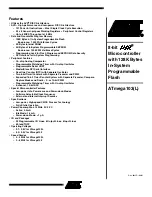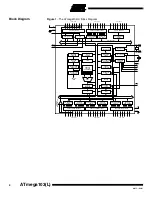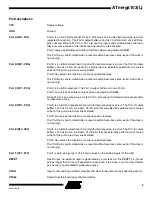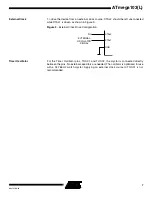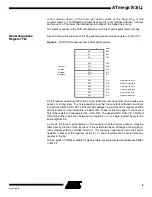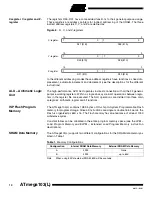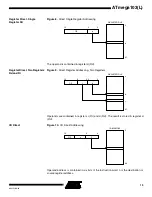
1
Features
•
Utilizes the AVR
®
RISC Architecture
•
AVR – High-performance and Low-power RISC Architecture
– 121 Powerful Instructions – Most Single Clock Cycle Execution
– 32 x 8 General-purpose Working Reg Peripheral Control Registers
– Up to 6 MIPS Throughput at 6 MHz
•
Data and Nonvolatile Program Memory
– 128K Bytes of In-System Programmable Flash
Endurance: 1,000 Write/Erase Cycles
– 4K Bytes Internal SRAM
– 4K Bytes of In-System Programmable EEPROM
Endurance: 100,000 Write/Erase Cycles
– Programming Lock for Flash Program and EEPROM Data Security
– SPI Interface for In-System Programming
•
Peripheral Features
– On-chip Analog Comparator
– Programmable Watchdog Timer with On-chip Oscillator
– Programmable Serial UART
– Master/Slave SPI Serial Interface
– Real-time Counter (RTC) with Separate Oscillator
– Two 8-bit Timer/Counters with Separate Prescaler and PWM
– Expanded 16-bit Timer/Counter System with Separate Prescaler, Compare,
Capture Modes and Dual 8-, 9-, or 10-bit PWM
– Programmable Watchdog Timer with On-chip Oscillator
– 8-channel, 10-bit ADC
•
Special Microcontroller Features
– Low-power Idle, Power-save and Power-down Modes
– Software Selectable Clock Frequency
– External and Internal Interrupt Sources
•
Specifications
– Low-power, High-speed CMOS Process Technology
– Fully Static Operation
•
Power Consumption at 4 MHz, 3V, 25
°
C
– Active: 5.5 mA
– Idle Mode: 1.6 mA
– Power-down Mode: < 1 µA
•
I/O and Packages
– 32 Programmable I/O Lines, 8 Output Lines, 8 Input Lines
– 64-lead TQFP
•
Operating Voltages
– 2.7 - 3.6V for ATmega103L
– 4.0 - 5.5V for ATmega103
•
Speed Grades
– 0 - 4 MHz for ATmega103L
– 0 - 6 MHz for ATmega103
8-bit
Microcontroller
with 128K Bytes
In-System
Programmable
Flash
ATmega103(L)
Rev. 0945G–09/01

